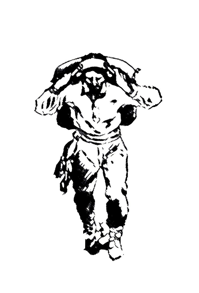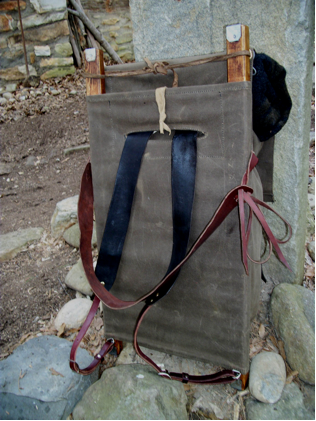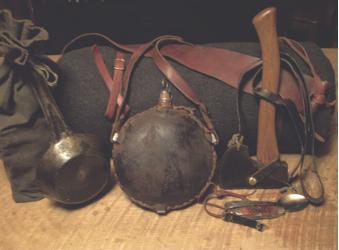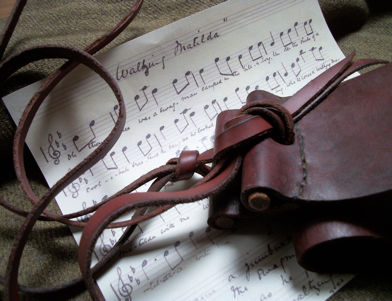 Tramping In The Old Style
Tramping In The Old Style
by Steven M. Watts
2014
“Tramping” in the literature of the Classic Camping era refers to “pedestrian camping” or “camping afoot”… what would one day come to be known as “backpacking.”
The references to shoulder slings or tumplines for packing bedrolls are almost non-existent in the writings of the Classic Camping masters—usually just passing comments which relegated them to an “out-of-date” status. It was all about pack harnesses, knap sacks, pack sacks and pack frames. It’s not that the old frontier “bedroll-on-your-back” had disappeared from the outdoor scene all together (it remained in use among American hobos, cowboys, Australian sundowners and other travelling-working men of the day)—it’s just that the two-strap options were clearly the preference for the recreational camper and sportsman.
Note: The tumpline tradition did survive in the canoeing culture of the Golden Age. Its use in the portaging of heavy loads between water routes is well documented, and has become part of the standard image and lore of traditional travel in the lake country of the Great North Woods. But, this is the long-tailed head-carry tump—not the chest or shoulder tump associated with the bedroll. Indian guides and sports alike used the head carry with tumplines to manage huge loads of duffle and even the canoes themselves. Shorter tumplines also helped with oversized loads in Duluth packs and pack baskets and pack frames—relieving tired shoulders on the tough carries.
Yet, the shoulder/chest sling remains an option for the Classic Camper looking to “go light” in the old style—with a blanket or two, a kettle, a fry pan, a canteen and a bag of grub. The additional possibles are carried in the pockets and/or a shoulder bag (mimicking the haversacks of frontier days). It can be as simple as a padded rope sling or as fancy as a hand-crafted leather outfit–complete with a set of buckled blanket straps. We can simply copy the frontier models of our pioneer forbears, or create our own based on the technology and design options available to campers during the Golden Age.
A soft/wide leather band makes a very comfortable blanket sling—slung over one shoulder and crossing the chest–shaping to the trekker’s body and spreading the load. Two to three inches in width is good. The tails (the long strap that runs through the center of the blanket roll) can be rope or leather. They can be attached on one end of the band with rivets, sewn or simply tied off through a large hole. They are attached to the other end by passing through a hole (or pair of holes) and tied off at the appropriate length.
But, Elsworth Jaeger offers up a way of crafting stick-reinforced pack straps that can easily be applied to the manufacture of a leather blanket sling/tumpline. Jaeger’s Wildwood Wisdom (perhaps more than any other Classic Camping text) rekindles the old fires of the buckskin men. It is fitting that we look to him for inspiration as we make our own piece of traditional outdoor travel gear in the frontier style.
“With their meager equipment and perhaps some jerked meat and parched corn in their pouches and a tightly rolled blanket, our buckskin men traversed the American wilderness from end to end…” – Elsworth Jaeger, 1945
Steve Watts directs the Aboriginal Studies Program and the Traditional Outdoor Skills Program at the Schiele Museum of Natural History in Gastonia, North Carolina. Watts is the author of Practicing Primitive: A Handbook of Aboriginal Skills, Gibbs Smith Publishers, 2004.





6 Responses to A Bedroll Sling/Tumpline for…